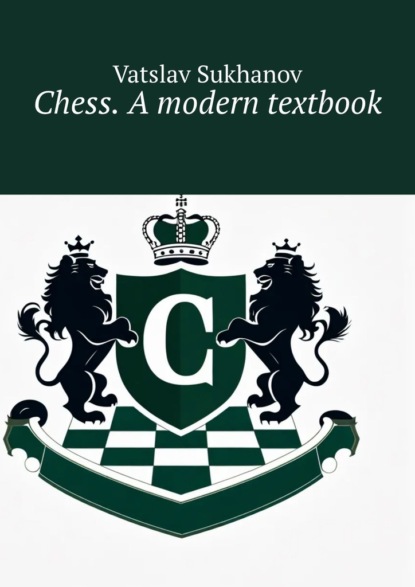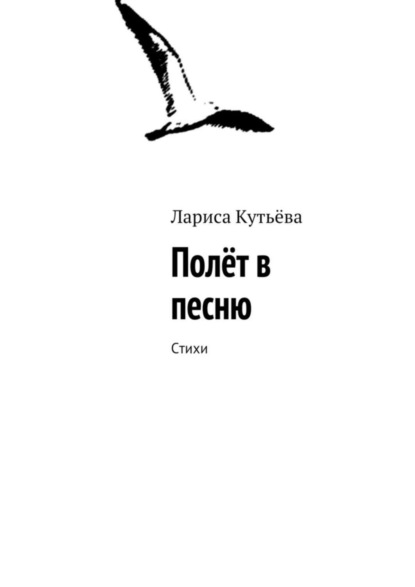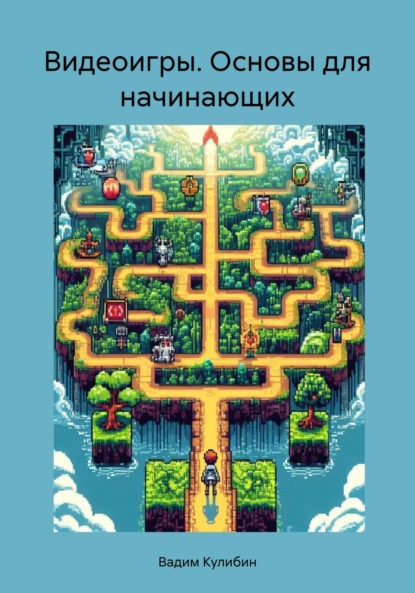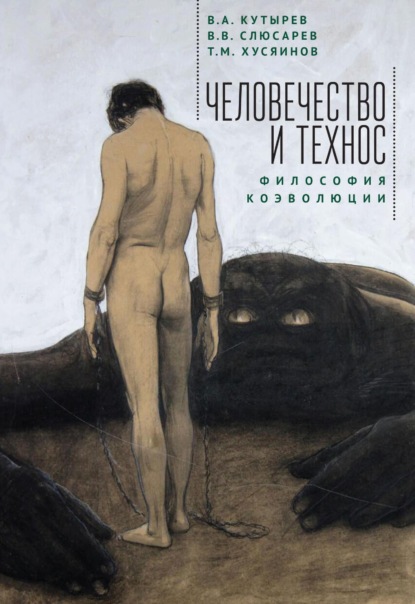- -
- 100%
- +

Castling is long and short
The position of the pieces after castling.

The position of the pieces after castling.
This is interesting:
In the Indian game, a rook is a war chariot (ratha). It was depicted with a team of horses and a charioteer riding them. Apparently, this is where the Persian name for the chariot, rukh, comes from. This is the same Rukh Bird from the tales of “One Thousand and One Nights.” The figure was also depicted as a bird. In Russia, this bird was mistaken for a stylized nose ornament on an ancient Russian vessel, the rook. This is where the figure got its name.
The appearance and other name of this piece, the tour, comes from Europe. In French, it means “tower” (tour). This is also how the French refer to a chess piece. In almost all European languages, the name of this piece means “siege tower” or “fortification.”
In English, it is called a rook (most likely from the Italian rocco, meaning “fortress”) or a castle (castle). In German, the piece is called a tower (Turm). In Polish, it is called a tower (wieża).
Why did the Europeans call the Indian chariot a tower? This was because the Spanish, who were the first to encounter chess, interpreted the Persian word “rukh” as “rocco.” This was their term for siege towers. Therefore, these chess pieces were depicted not as birds or chariots, but as towers.
Until the 15th century, the strongest piece was the rook, which was replaced by the queen. The rook was so important that the player who attacked it had to warn the opponent by saying “Check the rook.”
In order to better remember how the rook moves and hits, I suggest solving the problem.
It’s called the “8 Rook Problem.” 8 rooks should be placed on the chessboard (pawns can be used instead) so that none of them beats the other.
There are many ways to do this. Will you find any of them?
The Queen

The Queen
The queen is the strongest piece in chess and it stands next to the king. The queen is the strongest piece in chess, but it is not the most important. The most important piece is the king!
The queen can move any number of squares horizontally, vertically, or diagonally (forward, backward, left, right, or diagonally). However, it cannot jump over any other pieces.
The queen moves in the same way as the rook and the bishop combined. He can move in a straight line like a Rook and diagonally like a Bishop.

The queen’s move
A queen beats (“eats”) an opponent’s piece or pawn by moving and taking the place of the defeated piece or pawn.

The queen beats
Is it possible to have two queens in chess?
Yes, it is possible to have two or more queens, with a maximum of 9 queens (theoretically, one queen at the beginning of the game and 8 pawns that can be converted into queens, resulting in a total of 1+8=9 queens).
The queens are taken from a different set of chess pieces.
At the beginning of the game, players only have one queen. A second queen can be added once one of the pawns reaches the other side of the board.
In order to better remember how the queen moves and attacks, I suggest solving a problem.
The problem is called “The Problem of 8 Queens.” On a chessboard, you must arrange 8 queens (or use pawns instead) in such a way that none of them can attack another.
There are many ways to do this. Can you find any of them?
This is interesting:
Queen
The word “queen” came to the Russian language from Persian. There are several suggestions about what it means. Perhaps “queen” is farzana (wise man, advisor), perhaps ferz – “commander” or “vizier” (first minister).
In Europe in the 15th century, “vizier” turned into “queen”. This very weak piece now received new opportunities – the former queen could no longer walk one square diagonally, but along all lines and diagonals for any distance. Many chess historians associate this with the role of the powerful Queen Isabella of Castile in the life of Europe.
(chess appeared in Spain in the 8th century, and until the 15th century, the queen was considered a male figure. In Persian, “al-ferza” means an assistant, adviser.
Columbus asked Isabella and Ferdinand for funding for his voyage.
Torquemada.
The name of this man evokes terrible images in our minds: the burning of people in public squares, the brutal torture in the dungeons of the Inquisition, and the triumph of obscurantism and fanaticism. However, his contemporaries called him the “hammer of heretics,” the “light of Spain,” and the “savior of his country.” So who was this man, the Grand Inquisitor Thomas de Torquemada?
Torquemada was born in 1420. His father was an unremarkable man, but his uncle, Cardinal Juan de Torquemada, was a famous man: he was one of those who sent the famous Jan Huss to the stake (in 1415). But all this was negated by the terrible secret kept by the Torquemada family. The fact is that the grandmother of the future Grand Inquisitor was… Jewish.
What did it mean to be a Jew in the Middle Ages, and in Spain in particular? Their situation was terrible. The only way for Jews to avoid humiliating persecution and even death was to convert to the Catholic faith (such baptized Jews were known as Marranos in Spain).
Thomas learned the secret of his origins as a child. Since then, the boy’s desire had been to rid himself of the “shameful mark” and erase it. How could he do this? Only by fervently serving the cause of the Catholic faith! At the age of 14, Thomas joined the Dominican Order. The Dominican rules were strict, but Thomas was even stricter with himself! He was a complete ascetic: he didn’t eat meat, walked barefoot in any weather, whipped himself with a whip, slept only on a bare wooden bench, wore a rough hair shirt under his clothes that chafed his skin until it bled, and so on.
This is how the Dowager Queen Isabella of Portugal saw him when she visited the Santa Cruz Monastery, where Torquemada was the abbot. The queen was impressed by the religious ascetic’s presence. She could not have found a better tutor for her 7-year-old daughter. At the age of 39, Torquemada became the confessor and tutor of the young Princess Isabella of Castile. Princess Isabella was known for her exceptional education and her devout Catholic faith. Torquemada’s influence on Isabella was enormous. It was he who insisted on her marriage to Ferdinand, the heir to the throne of Aragon. And when in 1474 Isabella became Queen of Castile, and Ferdinand became King of Aragon in 1479, effectively forming a single Spanish state. But it is not enough to “create” a single state on paper – it is necessary to unite it in fact. To this end, in 1483, Isabella appointed Torquemada as Grand Inquisitor of Castile and Aragon.
Columbus requested financing for his voyage from Isabella and Ferdinand.
The classic of American poetry, Henry Longfellow, described Spain at the end of the XV century in his poem “Torquemada” in 1863.:
In Spain, numb with fear,
Ferdinand and Isabella reigned supreme.,
But he ruled with an iron hand
The Grand Inquisitor over the country…
He was as cruel as the lord of hell.
The Grand Inquisitor Torquemada.
The queen moved one square at a time, like the king (in the sense that the advisor could not be stronger than the King, which makes sense). However, with the rise of Isabella of Castile to power, the Spanish began to treat her with respect, and perhaps even fear, and as a result, they changed the gender of the piece and its power as a gift to her (more like a flattery). This was an extremely unusual event for the Spanish, as gender is a crucial issue for them, and the Spanish language does not even have a neuter gender. And a mistake in the indication of the gender is considered rude, even if you are just learning the language. So, the very fact that the queen became a female figure speaks of how great the authority of the queen was.
In almost all languages, the queen became known as the queen or the queen. In France and Germany – Dame, In Italy – Donna, in England – Queen, in Bulgaria – Tsarina, In Macedonia – Kralica. It is curious that only in Poland there was a proper name for the queen – hetman.
From Europe, our colloquial name for the queen came to us: “queen”. When recording a chess game in our country, the queen is written with the letter “F” – Queen, while in the international chess community it is written with the letter “Q” – Queen.
King

The King is the main chess piece, but it is not the strongest. The goal of a chess game is to checkmate the opponent’s king (i.e., put it in a position where it has no defense). The king cannot be removed from the board, as it remains on the chessboard until the end of the game.
The King can move one square in any direction, horizontally, vertically, or diagonally, forward, backward, or sideways.

The King’s Move
Unlike other pieces, the King cannot move to a square that is under attack from an opponent’s piece (under check) or another King.

The King’s Move
Attention! The minimum distance between the kings of both sides must always be one square, which neither of them is allowed to occupy.

The Opposition
The Кing cannot jump over other pieces (like the knight, except for castling) and cannot be sacrificed (the king is not “eaten”). We have already discussed the rules of castling when studying the rook.
The Кing can attack any piece of the opponent that is adjacent to it, even the queen, if the occupied field is not protected by another piece or the king (since such a move is considered impossible due to the threat of checkmate).

The King’s Move
This is interesting:
King – from the Persian name “al-shah” – king.
The name of the game itself comes from the Persian words “shah” and “mat”, literally – “the king (or shah) died”.
The chess king in all languages denotes the supreme ruler.
In England – king, in Gerмania – König, in France – roi, in Bulgaria – Tsar.
The value of the pieces is nominal (in a real game, the power of the pieces depends on many things, which we will study. (Sometimes a pawn is stronger than an entire army).

A pawn is stronger than an entire army
Pawn – 1 point, Knight – 3 points, Bishop – 3 points, Rook – approximately 5 points, approximately Queen – 9 points, King is priceless.
Since the pawn is 1 point, it is customary among chess players to evaluate the figures by the number of pawns.
The value of the figures is necessary to know in order to understand which figure can be exchanged for the opponent’s figure, whether it is beneficial or not. For example, a Knight can be exchanged for an Elephant, which is an equivalent exchange (assuming the positions are equal), and it is advantageous to exchange a Knight or an Elephant for a Rook, resulting in a gain of approximately two pawns (known as a “quality” gain in chess terminology). A Queen is approximately equivalent to two Rooks, and so on.
Knights and Elephants are referred to as “light pieces,” while Rooks and Queens are considered “heavy pieces.”
The rules of the FIDE game, the move
So, the move is considered to be made:
when moving a piece to a vacant square, when the player’s hand releases the piece;
when capturing, when the captured piece is removed from the board and when the player, placing their piece in a new location, releases it;
when castling, when the player’s hand releases the rook that has become on the square that the king has crossed;
when a pawn is promoted, when the pawn is removed from the board and the player releases their hand from the new piece placed on the promotion square;
Touching a piece.
By warning the opponent in advance, (saying “I’m correcting”) the player can correct the position of one or more pieces on their boards.
Otherwise, if the player touches:
one or more pieces of the same color, they must move or capture the first piece they touched that can be moved or captured
one of their own pieces and one of the opponent’s pieces, they must capture the opponent’s piece with their own piece; or, if this is not possible, they must move their own piece; or, if this is not possible, they must capture the opponent’s piece with any
1.4 Attack on a piece, checkmate, stalemate, draw.
Attack is the creation of a threat to capture an enemy piece.
Attack on an enemy piece occurs in the direction of your piece’s movement, except for pawns and knights.
For example:
A bishop both moves and attacks a piece or a pawn of the opponent.

Bishop’s Move
A rook can both move and attack an opponent’s piece or pawn.

The Rook’s Move
A queen can both move and attack an opponent’s piece or pawn.

The Queen’s Move
A king can both move and attack an opponent’s piece if it is not protected by another opponent’s piece or pawn.

Please note! The king did not attack the knight, as it is protected by the rook.
Please note! The king did not attack the knight, as it is protected by the rook.
The knight, unlike other pieces, does not attack in the same way as it moves. It seems to jump over the pieces in its path and attacks the opponent’s piece that is standing on the square where it lands after its jump.

The Knight’s Move
A pawn, unlike other pieces, does not attack in the same way as it moves.
(it moves straight and attacks diagonally (at an angle)).

Pawn capture
Garde (French gardez “take care”) – an attack on
the farm (obsolete; the declaration “garde” is not necessary).
This is the fall of the king.
Check the Elephant.

Checkmate with an Elephant

Check with a Rook

Check with a pawn

Double check
A double checkmate – is when the king is attacked by two pieces. A double checkmate. The knight was on d2 and blocked the rook, then moved to e4, checkmated the black king, and opened the white rook, which in turn also checkmated the enemy king.

Double check
If the white bishop moves to b5, then the black king will be in check from the bishop and the rook.
Perpetual check is when the king has no way to escape or defend against checks, and the attacking side (the one giving the checks) has no way to checkmate, and cannot strengthen their position (for example, if they stop giving checks, they will be checkmated themselves.) Perpetual check is a draw (usually by agreement of the parties or by the judge’s award; three-fold repetition of the position or the 50-move rule).
An example of perpetual check. White is in checkmate, with no defense, so White is forced to give perpetual check on the green-colored squares. Black’s king cannot escape checkmate or defend itself. It is a draw.

Eternal check
Mate is an attack on the king (check), from which there is no defense.
THE GOAL OF THE GAME OF CHESS IS TO GIVE A MAT TO THE ENEMY KING.
The so-called Linear Mate (the mate is given by “heavy pieces”, rooks or a rook and a queen along the lines – horizontal or vertical.

Linear checkmate
A rook checkmate is placed when the King is on the edge of the board and the King of the attacking side is directly opposite it.

Checkmate with a rook
Checkmate with a Queen and a King. (It is customary to say checkmate with a Queen, of course, meaning checkmate with a Queen and another piece, since it is impossible to checkmate with a single piece. Even a “stolen” checkmate (see below) is checked with the participation of the opponent’s pieces.

Checkmate the Queen

Checkmate with a Pawn

Checkmate with an Elephant

Checkmate with the Knight. A “stolen” checkmate can only be achieved with the Knight.
A draw in chess.
A draw in chess is the result of a game in which neither player was able to win. For a draw, each player receives half a point.
A stalemate is a position in which the player who is supposed to move cannot make a move (there is nowhere to move), but their king is not under attack (in check), and the game automatically ends in a draw.

Stalemate with the queen

Stalemate with the queen

Stalemate with the knight

Stalemate with the elephant

Stalemate with the rook

Stalemate with pawn

Stalemate with rooks

Stalemate with the queen
Even if your opponent has an army and you only have one King, a draw is still possible. Draw.

An atypical position.
A stalemate is also possible with many pieces.

A multi-figure stalemate.
A multi-piece stalemate position. The black pieces cannot make any moves, and the King is not under check – Stalemate. Draw.
A draw is recorded in the following cases:
1. By agreement of the players.
2. There is not enough material (pieces) to win.
For example, only kings remain on the board, a king and a knight against a king, a king and a bishop against a king, a king and two knights against a king
3. By the judge’s award. Repetition of the position three times (not necessarily in succession). If the players have not made a single pawn move in the last 50 moves, nor have they made any captures, then the game is declared a draw.
FIDE rules of the game, partners
Chess is usually played by two players (called chess players) against each other. It is also possible for one group of chess players to play against another or against one player, such games are often referred to as consulting games. In addition, there is a practice of simultaneous game sessions, when several opponents are playing against one strong player, each on a separate board.
In modern official tournaments, the rules of the International Chess Federation FIDE apply, which regulate not only the movement of pieces, but also the rights of the referee, rules of conduct for players and time control. A game played remotely, such as by correspondence, telephone, or the Internet, has special rules. There are many variations of chess that differ from the classic game, such as those with non-standard rules, pieces, board sizes, and so on.
Chapter 2
Chess notation. How to start a chess game. (Child’s checkmate, checkmate in 2 moves, Legal’s checkmate.) Opening (opening classification, gambits), middlegame, endgame. How to play the opening correctly. Which openings should be played and why. (open)
Chess notation
Currently, chess tournaments are played with different time controls. There are classical tournaments (60 minutes or more for each player), rapid tournaments (less than 60 minutes for each player), and blitz tournaments (less than 10 minutes for each player).
In classical tournaments, it is customary to record chess games. This is done using a special notation system. It is necessary to know it in order to be able to watch games (in chess books, magazines, solve chess problems and combinations, etc.), record your games and analyze mistakes, watch games of masters and grandmasters in order to learn.






